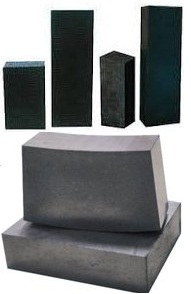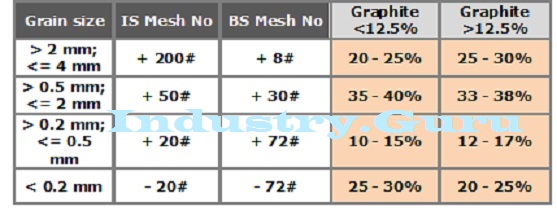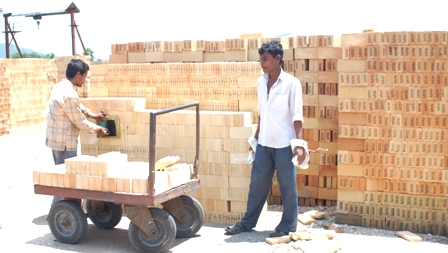11-July-2020
We assume that the reader
is already aware with the concept of ‘Sintering’, types of sintering and also
the effects of sintering on refractories. In this article we will discuss on
the effects of compacting pressure also called forming pressure, on sintering
and various other properties of refractory bricks.
It has been established
much before by Budnikov and Blyumen that sintering processes and reactions in
the solid-state are interrelated and proceed with on the phase boundaries, as
in a heterogeneous system. The basis of sintering,
according to their broad definition, is the capacity of the solid phase to
recrystallize, which, in turn, is related to the physiochemical nature of the
crystal. Pressure is said to be an
important factor in accelerating reactions in solid state and in facilitating
sintering at relatively low temperatures in a refractory brick.
Precautions must be taken
to eliminate any pressure variation during compaction of the refractory shape.
The main deleterious effect of variation in compacting pressure is the corresponding
differences in greenbulk density resulting into non-uniform shrinkage after firing and some
sort of distortion of warping is inevitable. The frictional force between the
die wall and the powder is directly proportional to the radial stress at the
wall. During a uniaxial pressing, the applied stress is in the axial direction
and is parallel to the die (mould) wall. For a given axial stress the resultant
radial stress depends on the fluidity of the powder under compaction. For
example both the radial and axial stresses are equal when a liquid is
compacted. However, when a non-elastic and incompressible solid is under axial
compaction, there should not be any radial stress. Thus, it is desirable to
decrease the powder fluidity in order to minimize the radial and frictional
stresses or the density and stress gradients in the refractory brick.
There is no doubt that the
forming pressure affects the firing behavior of the refractory materials. Such
effects may be due to:
>> Decrease in pore
size and better particle contact,
>> Strain energy
added due to plastic flow,
>> Strain energy
added due to particle interlocking, or
>> Fracture of
particles at contact points.
Suggested Article: QualityAssurance during Green Production of Refractory Bricks
In general increasing
pressure enhances the Green Density, decreases Shrinkage, and often increases
the Fired Density of refractory bricks. Higher compacting pressure (compaction)
may cause plastic flow, increased strain energy, or particle fracture, which
causes further increase in bulk density in refractory bricks. The effect of
these variations on firing properties of a refractory brick depend on the
firing time and temperature, and the nature of the refractory aggregates or
refractory raw materials used, but in general decreased pore size due to
compaction or particle fracture leads to increased density at lower firing
temperature in a refractory brick.














